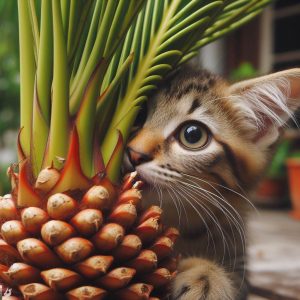Why Is There a Cat Food Shortage?
Several unfortunate events have converged to create the current cat food shortage in the US:
COVID-19 Disruptions
The COVID-19 pandemic caused major slowdowns and disruptions across supply chains and production lines for the past two years. Human food shortages were bad enough – the ripple effects also impacted pet food.
From ingredient sourcing to packaging and transportation, no part of the cat food supply chain was left unscathed. Even as human consumer demand stabilizes post-pandemic, the production system is still playing catch up.
The War in Ukraine
Russia’s invasion of Ukraine has further exacerbated global food shortages. Ukraine is a major exporter of wheat and other grains used in cat food. With food exports from the region disrupted by war, the ingredients for cat food have become scarcer.
Shipping and transportation snags are also hampering supply chains. Fuel costs have skyrocketed with the conflict, making the movement of goods more expensive.
Extreme Weather Events
Climate change is wreaking havoc on crops and agriculture around the world. Extreme droughts, storms, and freezes have damaged or wiped out key ingredients used in cat food production.
From corn and soybeans to meat by-products, climate disasters have decreased available quantities for manufacture. Damaged facilities have also slowed output.
Surging Demand
The past few years have seen enormous growth in pet adoption, especially cats. Millennials have been adopting cats at record rates during the pandemic. With 9.7 million more pets in US households now than in 2019, demand for cat food has spiked.
Manufacturers are struggling to increase production fast enough to meet the heightened demand from the swelling ranks of cat owners. Scarcity and inflated prices have resulted.
How Long Will the Cat Food Shortage Last?
Industry experts estimate the cat food shortage could last at least through mid-2023 based on the convergence of factors straining supply chains. However, the situation is fluid.
Duration will depend on:
- How quickly ingredient production and processing can scale up
- Stabilization of demand as pandemic pet adoption boom slows
- Ability to work around continued Ukraine war and climate impacts
- Vulnerability to new COVID variants disrupting labor and operations
Manufacturers are working overtime trying to increase capacity. But it takes time to expand facilities, source ingredients, hire workers, and ramp up distribution.
Meanwhile, demand remains sky-high. As long as adoption rates stay elevated and shortages persist, prices will remain inflated.
Experts hope the shortage will steadily improve over 2023. But widespread relief may not come until 2024 or beyond. Cat owners must prepare for the long haul.
Top Cat Foods in Short Supply
The shortages have hit all types of cat food to varying degrees. However, some specific brands and formulas have been especially hard to find.
Most affected cat foods:
- Prescription/veterinary formulas – These are typically produced in smaller batches than grocery store brands. Special dietary or allergy-friendly formulas have suffered.
- Wet/canned foods – These contain high amounts of meat, which has become costlier and constrained. Pouches are easier to store and ship than cans.
- Grain-free – These formulas rely heavily on peas, lentils, potatoes and tapioca as grain substitutes. Bad harvests have made these scarce.
- Limited ingredient – Sourcing simpler, specialized ingredients in bulk has grown difficult.
- Kitten foods – More production focus has shifted to meeting adult cat demand. But kittens have unique nutritional needs.
- Boutique brands – Smaller, specialty brands have less flexibility and clout when ingredients become limited.
Check with your vet on substitutions if your cat’s normal food is unavailable. Avoid switching foods suddenly as that can upset their digestion.
How Much Have Cat Food Prices Increased?
As you’ve likely noticed during recent trips to the pet store or supermarket, cat food prices have jumped significantly.
From January 2021 to June 2022:
- Wet cat food prices rose 14%
- Dry cat food prices rose 21%
This steep inflation is driven largely by manufacturers having to pay much more for ingredients, labor, transportation and materials. They pass those increased costs onto consumers.
Unfortunately, prices will likely keep rising throughout 2023 as the shortages persist. Stocking up when you spot sales or discounts can help you save. Consider buying in bulk online.
When Will Cat Food Prices Go Back Down?
There is no quick fix to such a complex, multi-layered problem. Cat food prices will likely remain high throughout 2023. However, costs should gradually decrease as:
- More cats are spayed/neutered, slowing adoption demand
- COVID disruptions to labor and transportation ease
- Ukraine war impact on grains possibly improves
- Bad weather events subside, allowing crop yields to recover
- Manufacturing capacity expands to meet higher demand
This relief could take two years or more to be fully realized. The ingredients that go into cat food are global commodities impacted by many unpredictable factors.
Be prepared for ongoing inflated prices in 2023. Employ budget-stretching strategies like buying in bulk, generic brands, sharing deals with friends, and utilizing coupons. Every bit of savings helps.
7 Practical Tips to Get Through the Cat Food Shortage
Facing empty store shelves and rising prices can feel daunting. But you can take proactive steps to ensure your cat continues eating well:
1. Take Inventory and Calculate Needs
- Track what’s still in your pantry and calculate how long it will last. A worksheet can help with the math.
- Factor in your cat’s age, weight, and any special dietary needs.
- Having an exact idea of your requirements makes it easier to shop and ration wisely.
2. Shop Smarter
- Buy larger bags/cases to take advantage of bulk pricing. Canned food can be kept for 1-2 years if sealed.
- Sign up for store loyalty programs and apps to get cat food coupons and sale alerts.
- Visit multiple stores and markets to increase odds of finding inventory. Be sure to check ethnic grocers and pet supply outlets.
- Shop at off-peak hours when shelves have just been restocked. Early morning or late nights are best. Avoid weekends.
3. Consider Alternative Formats
- Canned and pouch cat food is easier to locate than kibble. Stock up when possible.
- Freeze-dried raw food is shelf-stable for over a year and just needs water added. It provides balanced nutrition.
- Kibble toppers boost moisture and can make dry food last longer. Spoon wet food on top.
4. Substitute Similar Formulas
- Consult your vet, but comparable flavors and brands can temporarily stand in if your cat’s food is out.
- Gradually transition food over a week or two to avoid GI issues from sudden change.
- Focus on matching protein sources and caloric density as closely as possible.
5. DIY Food Only as a Last Resort
Homemade cat food is difficult to sustainably formulate long-term to meet all nutritional requirements. However, in a pinch, these options can briefly help:
- Cooked unseasoned meat, eggs, or seafood + cooked rice or pasta + chopped vegetables
- Canned sardines or tuna packed in water (limit, high in mercury)
- Commercial raw frozen dog food (short-term, may be nutritionally incomplete for cats long-term)
Again, consult your vet before DIY food to ensure safety.
6. Reach Out for Assistance
- Talk to your vet – they may have access to prescription or therapeutic formulas.
- Local cat rescues may have spare food they can share.
- Food banks, churches, and community pet organizations may offer assistance.
- Ask neighbors, family, or friends to share extras or shop for you when they see inventory.
7. Stay Calm and Be Proactive
- Monitor statistics so you know when deficits are easing.
- Sign up for restock alerts and store loyalty programs.
- Avoid stockpiling more than you can properly store and rotate.
- Focus supplies on kittens, seniors, and cats with health conditions first.
- Call around to stores daily or weekly to check on arrivals vs only shopping in person.
With preparation, creativity, and a bit of luck, you can keep your cat fed and content even with ongoing shortages. Stay vigilant and don’t wait until you’re completely out to take action.
What If My Cat Refuses Alternative Foods?
Feline tastebuds and preferences are notoriously finicky! If shortages force you to buy different formulas or brands, here are tips to entice your cat to eat:
- Transition slowly – Mix in 25% new food with 75% old favorite for several days, then 50/50, then 75% new food. Go at their pace.
- Warm it up – Cats prefer food at around 100°F. Warming it releases aromas. Never microwave wet food, just use warm water bath.
- Add mix-ins – Sprinkling on a pinch of parmesan, nutritional yeast, or dried catnip can make food more appealing.
- Use meal feeders – These automated bowls only release small portions at preset times. This prevents grazing and promotes eating when mealtime comes.
- Try topping with gravy – The sauce from canned food on top of dry kibble adds flavor. Broth from cooked unseasoned chicken can also entice.
If you’ve tried all these tricks without success, call your vet to explore options before your cat’s health is impacted. Never withhold food for multiple days thinking they’ll cave. Cats can develop hepatic lipidosis from rapid weight loss. Be patient, creative and contact your vet for guidance if they continue refusing food.
Cat Food Shortage Forecast for 2023 and How to Cope: Key Takeaways
- Current shortages are driven by COVID disruptions, Ukraine war, climate change, and spiking demand. This perfect storm has constrained cat food supplies and inflated pricing.
- Shortfalls and price hikes likely to persist through 2023 until production scales up. Be prepared for ongoing challenges.
- Take inventory of current stock. Shop smart and buy in bulk when possible.
- Consider alternative formats like freeze-dried raw. Carefully transition to comparable foods as needed.
- DIY and homemade recipes should only be very short term last resorts. Consult your vet.
- Stay proactive – sign up for alerts, check frequently for restocks, and partner with your community.
- Go slowly and entice picky eaters with mix-ins and warm temperatures if they resist new foods.


